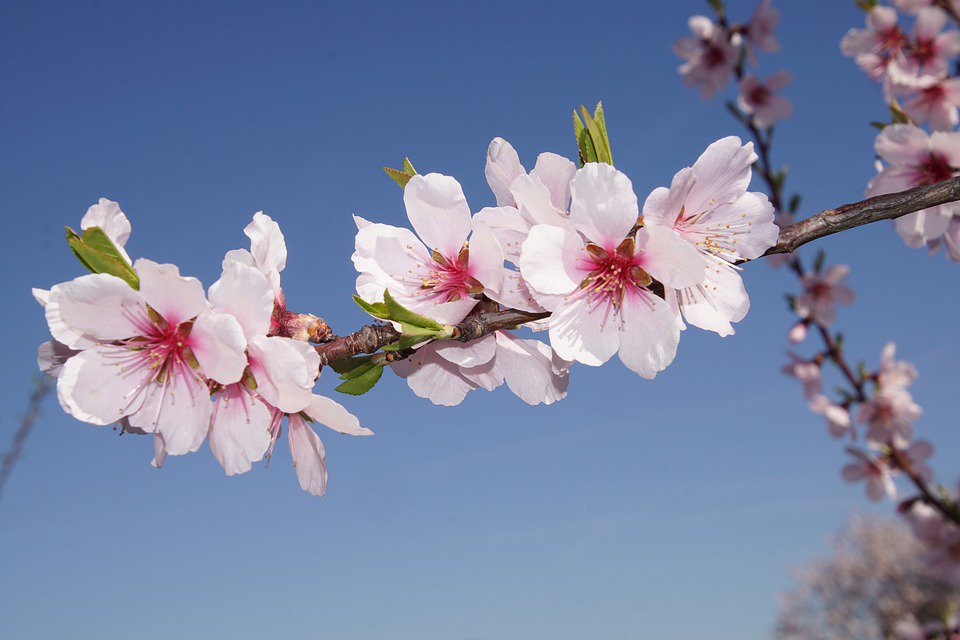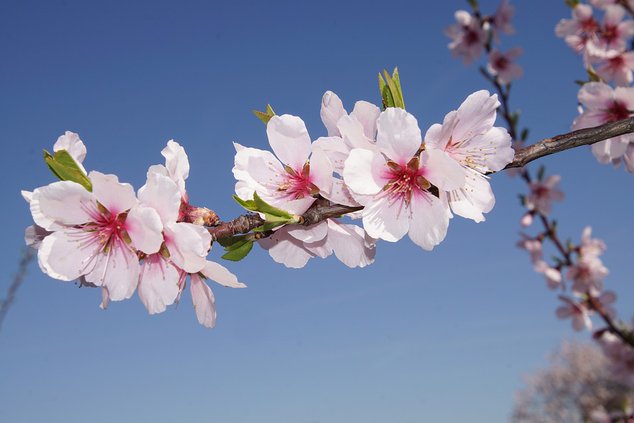Get ready for nirvana.
In less than a week the sweetest days of the year will arrive.
They will come with the bees — millions of bees, tens of millions of bees.
It is part of one of nature’s most blessed unions. Bees zip through nearly naked almond branches to visit small buds just starting to split through the soft wood. In a matter of a short time those buds will open. Sometimes it seems to happen overnight. Skeleton orchards start to shiver after losing the last rays of semi-warmth as the sun slips behind the Diablo Range as winter uses the chill of night to try and prolong nature’s slumber.
But then as the sun rises over the snow draped Sierra in the east the light of a new day backlights the most glorious sight ever created by Mother Nature — billions upon billions of delicate white and pink almond blooms bursting everywhere you look.
Spring doesn’t simply arrive in the countryside around Manteca and Ripon. It bursts open seemingly all at once but not in an in-your-face way. Rather it caresses the senses.
Feast your eyes on delicate creations that make cherry blossoms seem rough by comparison. Touch the delicate beauties and you are suddenly as nervous as a guy holding a newborn baby for the first time. They are so soft and new that you fear you may hurt them.
But then the biggest treat comes along. The bees have been busy. As the mercury inches up ever so slightly toward the magical 70 degree mark, the sun’s warmth gently bakes the blossoms creating a delightful scent that is more intoxicating than Chanel No. 5 announcing the arrival of a sweetheart. The air you breathe is filled with delightful reminders that the cold and sometimes gray days of winter were worth every second.
But it isn’t until night falls when the warmth of the mid-February day slips away and a slight coolness slips over the land that the real treat begins. On the perfect night, there is an ever-so gentle breeze. The steady stream of air washing ashore from over the Pacific Ocean makes its way across the Altamont Pass and through the meandering Delta to nudge the scent along as a gentle caressing breeze makes its way through orchard after orchard. It is best this time of year to leave your bedroom window ajar before you retire for a late winter slumber even if you still need to bundle against the cold.
That’s because there is not a more glorious way to drift off to sleep than taking in breath after breath of the sweetest perfume ever concocted — almond blossoms in bloom. As your body goes into sleep mode and your mind drifts away they help create the sweetest dreams of the year. And if you happen to awake in the middle of the night, your senses led only by your nose make you feel as if you are in Mother Nature’s arms bundled up with covers as you smell the sweet scent of rebirth. And, if you are lucky, the fragrant elixir will wake you in the morn. Who needs to smell the coffee when you can inhale the soft fragrance of almond blossoms?
It is little wonder millions of bees have no issue with being as busy as a bee. How can it be work when you get to zip from one almond blossom to another getting intoxicated with the sweetest smell on earth?
Once you’ve taken in the first act of spring in the Northern San Joaquin Valley it is easy to understand how insects that can hurt so much when they sting can produce such a sweet golden treat that we call honey.
The days of February are the days that try the souls of almond growers. While we revel in the return of almond blossoms, growers fret about rain and high wind striking at the most inopportune time.
The early almond varieties started popping blooms here and there a week ago. Almond growers will tell you this is a week ahead of time. Mother Nature, if she could talk, would likely laugh at such a statement knowing full well that almond blossom time starts always on the terms of the brave buds that give the first signal that the glorious symphony of smells and sights she is cueing up is about to fill the countryside with a blazing celebration of life.
It’s a spectacle that makes the great works of arts such as Vincent Van Gogh’s “The Starry Night” look drab and mechanical.
Nothing flows as free or inspires as much as what the almond blossoms and what follows brings to the valley.
Forget about waking up and smelling the roses. That’s for people landlocked by asphalt and concrete. Get out and savor the almond blossoms.
Drive south or east from Manteca in the coming weeks and roll down your windows. You won’t be disappointed. Better yet park the car, get out, and walk along an orchard’s edge that is in full bloom. Unless you are unfortunate enough to be cursed with an allergy to almond blossoms, there is nothing that man has yet to bottle that can bring as much bliss to your nose.
This is the time of year I trade my 3 to 4 mile jog for a 6 to 8 mile excursion into the countryside heading down orchard lined country roads such as Manteca Road, Sedan Avenue, Alice Avenue and Veritas Road not as much to exercise my lungs and heart as it is to lift my soul.
In fields where growers still let grass grow in almond orchards, the dew moistened blades you jog pass that form green stripes between rows of white and pink blossoms creates a delightful scent of its own as the month slips closer to March.
It’s a decadent treat.
Almond blossom time also heralds the start of an endless parade of blooms and scents that the Northern San Joaquin Valley’s Mediterranean climate coaxes out of some of the most fertile soil in the world.
By the time March arrives and almond blossoms have reached their crescendo, Mother Nature unleashes the final performance of the production that will lead to the shaking of several billion pounds of nuts up and down the Central Valley when summer draws to a close.
The sweet scent is waning as delicate white and pink blossoms start softly falling to the ground. The “Manteca Snow” — or “Ripon Snow” if you live in the self-proclaimed Almond Capital of the World — is the final act that brings down the curtain on the almond blossom season coating the earth with a gentle blanket of blossoms.
Enjoy what is about to unfold in our backyard.
It’s heaven on earth.






